The boat ride up the New River to Lamanai Outpost took about an hour. For the entire ride we reveled in the bright sun, blue sky and the serenity and clarity of the river and its jungle edge. The only activity consisted of two or three small boats bearing local fishermen. The only substantial human habitation consisted of some Mennonite cattle and sugar cane farms and support facilities. The Mennonites arrived in Belize in the 1950s and have established a remarkably successful agricultural empire in the country. Most of the country’s meat, eggs, corn and sugar production comes from the Mennonite farms.
We docked at Lamanai around noon and were treated to cold drinks immediately. The cabanas at Lamanai are very comfortable and attractive. The Lodge, where all meals are served and activities commenced, was a short but steep up-hill trek from our cabana. Our cabana overlooked the Lagoon and was on the edge of the compound, so it provided ample opportunity for birding right from our veranda.
Lamanai Outpost provides guides as a part of the package. During our three days there we spent time with three or four of them and each of them impressed us with their knowledge of the natural and historical attractions of the area. The bird life was abundant. We took a night cruise and a late afternoon cruise on the Lagoon. Among the new “life” birds I saw at Lamani were: Agami Heron (seen roosting by the river on the night cruise), Collared Forest-falcon (heard only), Great Curassows, Brown-hooded Parrots, White-fronted Parrots, Yellow-headed Parrots, Red-lored Parrots, Yucatan Nightjar, White-bellied Emerald, Slaty-tailed Trogon, Tody Motmot and these:
Northern Potoo
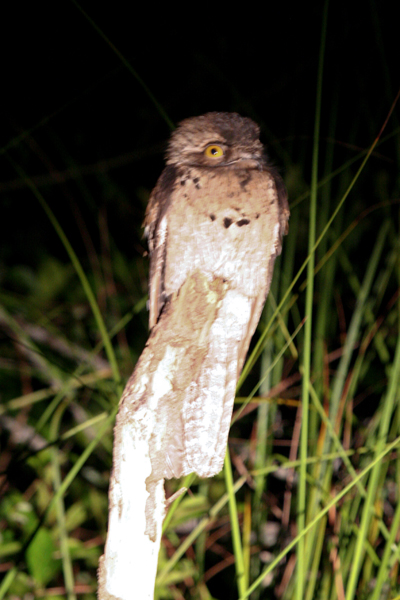
Violaceous Trogon
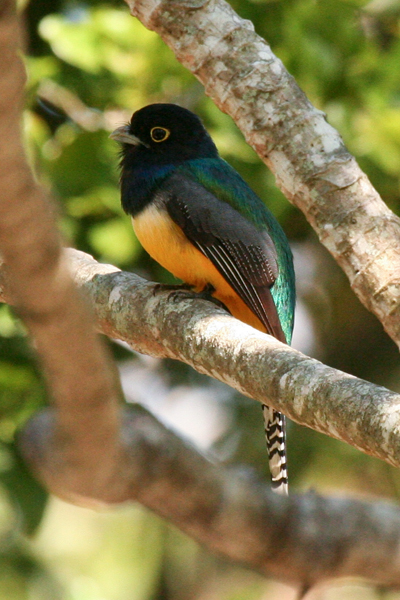
Royal Flycatcher
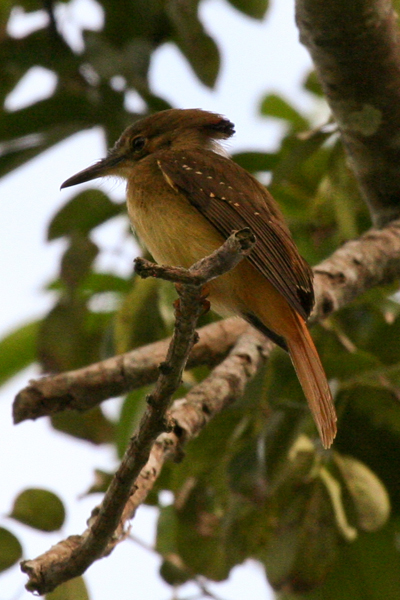
Blue-crowned Motmot
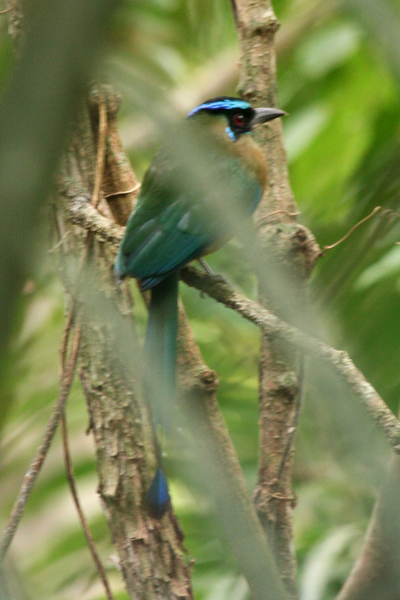
Collared Aracari
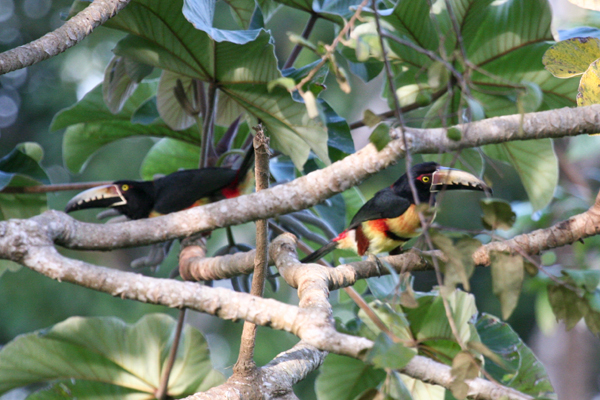
Keel-billed Toucan (the national bird of Belize)
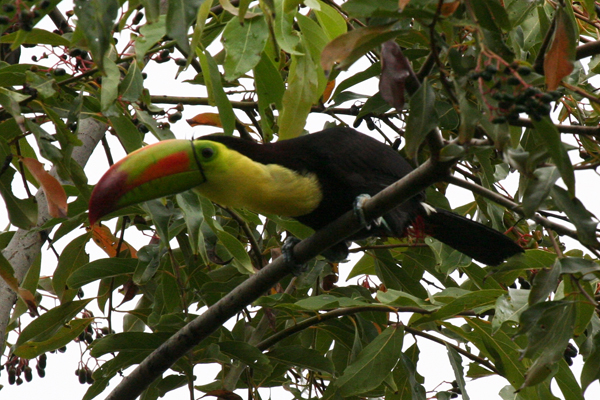
Also see were Smoky-brown Woodpecker, Olivaceous Woodcreeper, Tawny-winged Woodcreeper, Strong-billed Woodcreeper, Northern Bentbill, Bright-rumped Attila, Ochre-bellied Flycatcher, Yucatan Flycatcher, Red-capped Manakin, Masked Tityra, Mangrove Vireo, Yellow-winged Tanager, Red-throated Ant-Tanager, Red-legged Honeycreeper, Yellow-throated Euphonia, Blue Bunting, Black-headed Saltator, Green-backed Sparrows, and Montezuma Oropendola. A long list.
The best bird at Lamanai was not a new bird for me, but the view that we had of a pair of Jabiru Storks was unforgettable. As the sun was going down, we were sitting quitely in our boat with our guide when we spotted the first Jabiru flying across the Lagoon from the south.
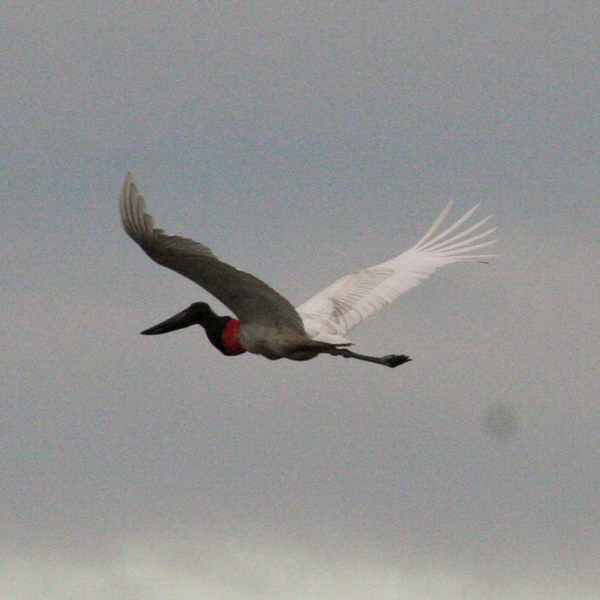
It landed in a very large tree on the west bank, quite a distance from us. The tree contained the nest that this pair of Jabirus has been using for the past 14 years. As the sun was setting, the second Jabiru joined its mate atop the nest and the two of them preened in a stately manner. The storks are 5 feet tall and have an 8-foot wingspan.
Black Howler Monkeys were abundant at Lamanai. They made their presence in the tree tops very evident by persistently roaring challenges to other groups of Howlers. Howler monkeys don’t howl; they roar. The sound is very much like that of the lions we heard roaring at night when we were in Botswana a couple of years ago. It is difficult to believe that such volume could come from these 40-50 pound monkeys. They would be frightening but for the knowledge that there are no lions in Belize and the Monkeys stay up in their trees. Often their howling could be heard during the night or in the early morning hours as well as during the day. The quiet Spider Monkeys were more acrobatic, or at least more inclined to display their acrobatic talents in leaping great distances from one tree top to another.
On day 2 we explored the Mayan temples at Lamanai. These structures, some dating back over 2,000 years, were redicscovered a century or two ago. Much excavation has taken place over the years to reveal the original architecture and art and to recover what might remain of the artifacts.
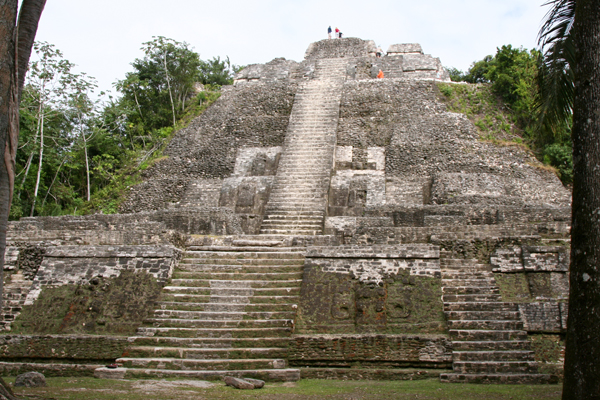
Lamanai was an important trading post for the Mayans as it was located near the major lagoon that connected to the Caribbean and the eastern shore line of Central America. Excavation and restoration has slowed in the past few years because of cutbacks in funding. Nevertheless, this old Mayan city remains a big draw for tourists in Belize. We saw far more people there than anywhere else that we traveled (except the airport). Fortunately, the Lodge arranges for its guests to be guided through the ruins early in the morning, before it opens to the general public and the crowds arrive. When I say crowds, I don’t mean crushing numbers. Just groups of people, usually in the company of a guide explaining the history of Lamani. It was pleasant to be there early in order hear your own guide and take your time as your small group (7 of us) sees fit.
After lunch on our last day at Lamanai we were met by a driver provided by our next Lodge, Chan Chich. The drive was pretty bad. It took over 3 hours to go about 60 miles to Chan Chich. The roads were very rough and dusty and the vehicle was hot. Our driver had the unfortunate attribute of talking very loudly and nearly non-stop. My ears were ringing, among other maladies, by the time we arrived at Chan Chich.
I highly recommend Lamanai Outpost for those interested in the combination of excellent birding and fascinating Mayan history and ruins. The lodging and food are both good. In the next installment I will summarize our experiences and impressions of Chan Chich.
